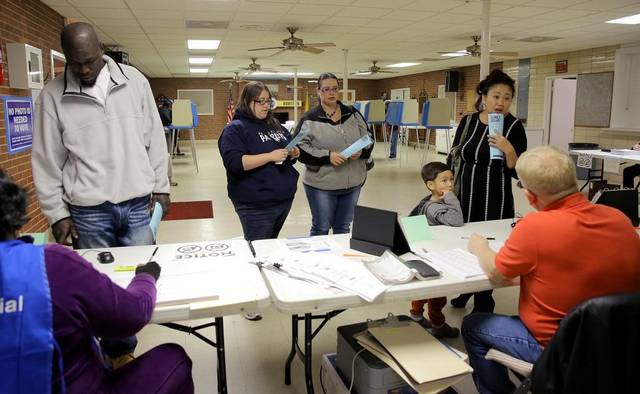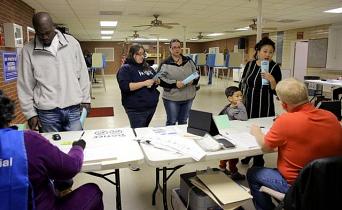Donald Trump's Win: U.S. Voter Suppression Can Impact Outcomes
Washington, DC – This year,
and for several years, there has been a concerted effort in many states
to stop some voters from voting, or to make it much harder for them to
participate. Since the Supreme Court rolled back key provisions of the
Voting Rights Act in 2013, elected officials have purged existing voters
from the rolls, made cuts to early voting, reduced polling places, put
in place strict voter photo ID laws and levied onerous voter
registration restrictions.
“We recognize the importance
of a peaceful transfer of power as a hallmark of a functioning
democracy, and we recognize that we have one of the best election
systems and democracies in the world, but we also need to say it out
loud: Chris Carson, president of the League of Women Voters of the United States.
“It is clear that this kind
of voter suppression could impact the outcome of elections,” Carson
continued. “We may never know whether the efforts to block voter
participation changed the outcome in any particular race – but we must
be on guard for the future.”
Tight margins in some key elections show that suppression may play a role.
In Wisconsin, President-elect Trump beat Secretary Clinton by roughly 27,000 votes, however according to federal court, 300,000 registered voters lacked the proper photo ID. In North Carolina, the closest governor’s race the country has seen in more than a decade is still unresolved, with fewer than 8,000 votes separating the current governor from his challenger.
“We are not talking about
vigilante voter intimidation,” said Carson. “We are talking about
official, legal voter suppression by state legislatures and election
officials.”
Carson pointed especially to
the work of Kris Kobach, the Secretary of State of Kansas, who engaged
in a multi-year effort to stop eligible Kansans from voting. Laws
drafted by Kobach required restrictive documentary proof of citizenship
to register by mail and at the DMV. Despite defeats in federal and state
courts, Kobach still pushed to keep eligible citizens from voting.
“Some try to justify voter
suppression as just politics as usual – trying to ensure their
candidates will win,” Carson said. “There is no excuse for erecting
unnecessary barriers to voting. It is not the American way.”
In 2016, the League worked
to make sure voters impacted by new laws were aware of these
restrictions. In Ohio, the League made thousands of phone calls to
inform voters about that state’s purge. In Virginia, the League
conducted outreach so voters knew about the new ID law. In Kansas, the
League worked to register voters and provide them information. Across
the country League members volunteered as non-partisan poll observers.
“Every eligible citizen
should vote and the election system should help them participate rather
than standing in the way,” said Carson. “The League of Women Voters
will continue our work to expand participation in the election process
and work to give a voice to all Americans,” she concluded.
The League is gearing up to take a stand in statehouses and courtrooms nationwide to ensure no voters are left behind.
What states rigged their elections? Here’s the list of 13 states with new voting restrictions in effect in the 2016 election:
- Alabama: restrictive photo ID requirement
- Arizona: limitations on mail-in ballot collection
- Indiana: provide proof of identification
- Kansas: documentary proof of citizenship
- Mississippi: restrictive photo ID requirement
- New Hampshire: restrictive photo ID requirement
- Ohio: cuts to early voting, changes to absentee and provisional ballot rules, elimination of same day register and vote, and illegal purge of voters
- Rhode Island: restrictive photo ID requirement
- South Carolina: restrictive photo ID requirement
- Tennessee: additional restrictions with photo ID requirement and illegal purge of voters
- Texas: restrictive photo ID requirement
- Virginia: restrictive photo ID requirement
- Wisconsin: cuts to early voting and restrictive photo ID requirement
Comments
There are 0 comments on this post













